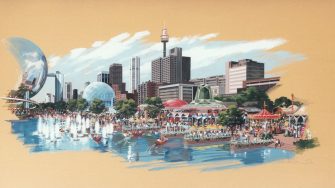Meet the curator behind Unrealised Sydney: Professor Robert Freestone
Unrealised Sydney is an exhibition at the Museum of Sydney that explores visions and designs for Sydney that preceded the built reality today – it’s a look at our city as it was imagined in the past.

